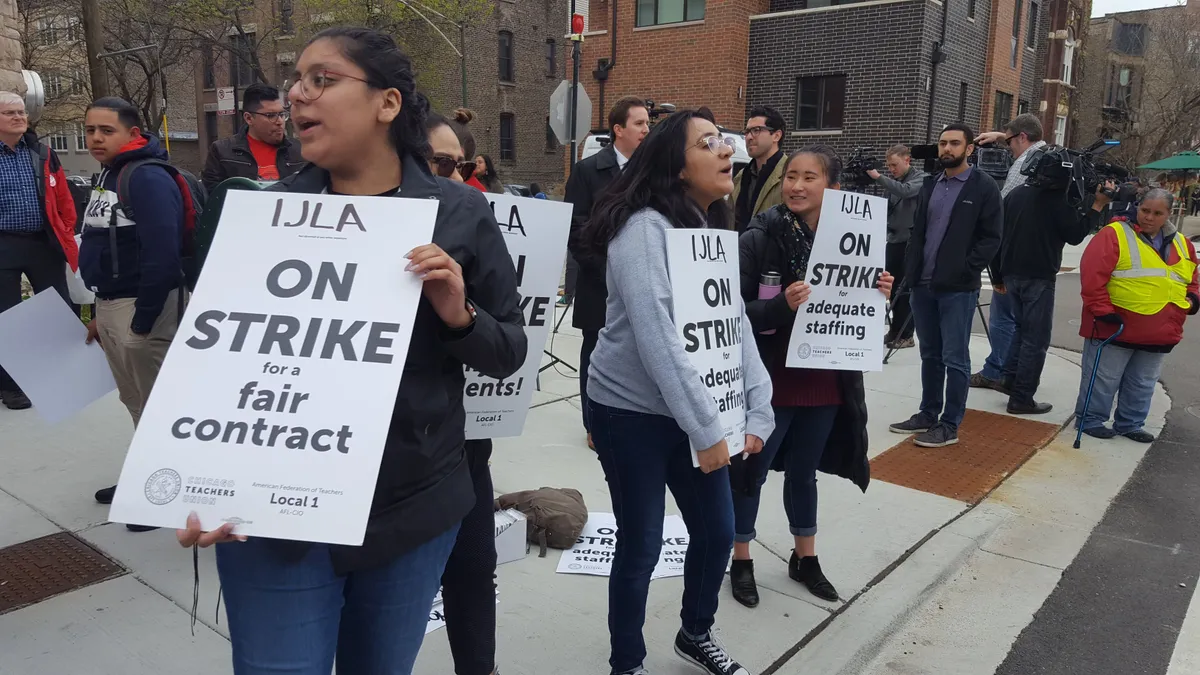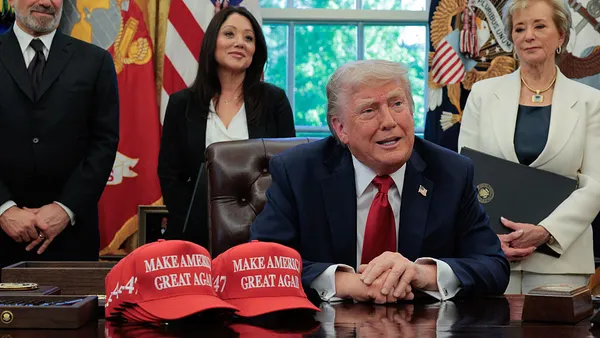Dive Brief:
- 2019 brought the most major work stoppages the U.S. has seen in a decade, according to the U.S. Bureau of Labor Statistics (BLS).
- The country experienced 25 stoppages involving 1,000 or more workers and lasting at least one shift each last year, BLS said. There were 20 such stoppages in 2018, but only 7 the year before, according to BLS data.
- Roughly 425,500 workers engaged in the 2019 stoppages, with most (270,000) from the educational services industry. BLS said the single largest stoppage last year was triggered by a dispute between General Motors (GM) and the United Auto Workers union, which involved 46,000 workers and lasted for 29 work days — a cumulative loss of 1,334,000 work days.

Dive Insight:
Last year's GM strike was the largest in any U.S. industry since 2007, according to CNN. And, as reflected in the BLS statistics, many striking workers last year were in the education sector. Workers in those industries and several others, including hospitality and grocery, appear increasingly willing to draw a line in the sand when they feel their needs are not being met.
Notably, non-union workers are banding together to participate in walkouts and formal protests. Workers at Google, for example, made headlines when they walked out at the end of 2018 — a movement that led to a number of changes from Google's leadership team, including the creation of a website for employee complaints. Workers at Amazon also announced they would be walking out over company practices that allegedly contributed to climate change, various outlets reported.
But even those who don't officially strike or walk out are publicly asking their employers to take a stand on various social issues and voicing their opinions on social media. While these efforts create obvious concerns for HR — especially talent professionals working to maintain a strong brand for recruiting purposes — they also may create opportunities to take on a strategic role, spearheading improved communication and transparency.












